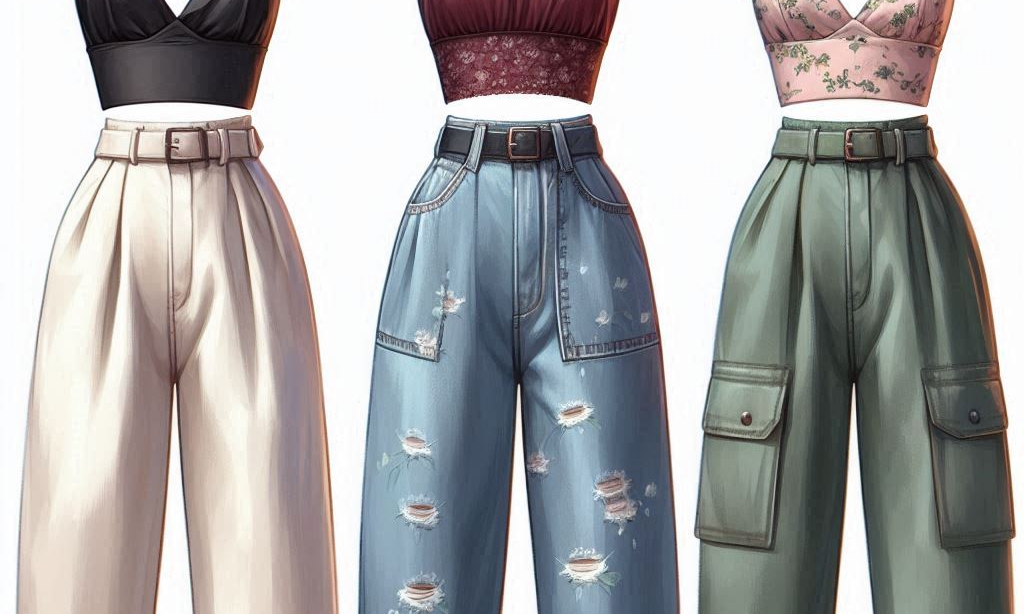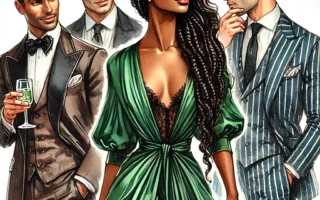Where to shart when changing your wardrobe
Mind maps are the secret weapon for wardrobe planning.
Picture it: instead of aimlessly wandering the aisles or mindlessly scrolling online, you’ve got a game plan. Start with the center, let’s say “New Wardrobe.” Then branch out—think seasons, occasions, color palettes, or even moods you want to embody (hello, chic fall vibes or casual but polished).
Each branch can be a category—‘workwear,’ ‘weekend brunch,’ or ‘date night’—then break those down further into specific pieces: “staple blazer,” “versatile jeans,” “killer boots.” Suddenly, you’re not just throwing things in your cart. You’re curating. No more impulse buys you’ll regret later. You’ll end up with a closet that actually works for you, not one that mocks you with unworn outfits every time you open it.
How often should I change my wardrobe (without giving ‘neurotic’)?
Mind mapping is a creative and logical way of organizing your thoughts whenever you feel the need for a new wardrobe. Starts with a central outfit concept before you can branch out into related styling ideas, just like a tree.
Using mindmaps when you’re new wardrobe shopping is perfect.
But constantly revamping your wardrobe can scream overkill. You want to aim for a refresh every 6 to 12 months. Like, seasonal maintenance.
You can swap out a few key pieces when the weather shifts—lighter fabrics in the spring, cozier knits in the fall and update your shoes or a couple of go-to accessories, but don’t feel the pressure to overhaul everything.
The trick is to stick to a core style that feels authentic to you. Don’t just chase every micro-fashion wave.
This way, you’re keeping things fresh, but you’re not walking into your closet every month like, “Who is she?”
How many outfits make for a New Wardrobe?
If we’re being totally honest, a “new wardrobe” isn’t about sheer volume. Like, we’re not talking 50 random tops that don’t even know how to hang out together. No, no. We’re talking the outfits that get it.
At minimum, you’re looking at a solid 10-15 outfits that mix, match, and slay every occasion.
A killer pair of jeans that can flirt with both a t-shirt and a silky blouse, a blazer that moonlights as both work chic and weekend brunch fabulous, and dresses that scream effortless (but we both know you planned the whole vibe).
Throw in like, 3 pairs of shoes—one comfy but cute, one “let’s cause a scene,” and one just for running errands but making it fashion. Accessories? That’s your wildcard. They take it from “I just threw this on” to “Yes, I’m the main character, thanks for noticing.”
So, total outfits? Eh, if you’ve got around 15 that can remix themselves into 20+ looks, you’ve got a whole new wardrobe. Trust me. And yes, one of those outfits must be for spontaneous Saturday mimosas. It’s a rule.
You need a few standout “hero pieces”—those items that redefine the rest of your closet. These pieces are like anchors. For example, one bold coat or statement jacket can make 3-4 outfits immediately look fresh. It’s not obvious because most people pile up basics, but a unique anchor piece changes the game.
Next, focus on complementary neutrals that can stretch across seasons. Black, navy, and beige are your power colors, but mixing in an unexpected neutral, like olive or burgundy, adds depth without being flashy. Most people don’t realize how much mileage you get from just tweaking your neutral palette.
And finally—fabric matters. Investing in a couple of luxe-feeling fabrics (think silk or cashmere) instantly elevates any outfit, but here’s the trick: use these as layering pieces. A simple, well-made cardigan or silk blouse can slot into multiple looks, taking them from casual to sophisticated, depending on how you style them.
It’s not about how many, it’s about these strategic pieces that work smarter, not harder.
Using a mind map for shopping has a bunch of perks!
- Clarity and Focus
- Time Efficiency
- Budget Management
- Stress Reduction
How about a sample mindmap for your new wardrobe shopping?
Center: New Wardrobe
Branch 1: Seasons
- Fall
- Chic Coat: Think a tailored wool coat in camel or navy, sharp enough for work, cozy enough for weekends.
- Layering Sweater: A sleek, lightweight turtleneck in dark tones that can easily slide under jackets or stand on its own.
- Boots: Mid-calf, slightly heeled, leather or suede in an unexpected neutral like olive or deep rust.
- Spring
- Light Trench: But not beige—try pastel or soft khaki to add a breath of fresh air.
- Flowy Skirt: A-line or midi with a playful print, something that spins with you.
- Sneakers: Sleek, leather, but with a pop of color on the heel or laces for that subtle fun.
- Summer
- Breezy Dress: Midi or maxi, lightweight fabric like cotton or linen, with unique, bold patterns that stand out.
- Wide-brim Hat: Not the floppy beach kind—structured and polished, great for both strolls and sundresses.
- Flat Sandals: Minimalist leather, with soft, earthy tones. Maybe some subtle metallic details.
Branch 2: Occasions
- Workwear
- Staple Blazer: Crisp lines, no buttons, sleek lapels. Opt for deep charcoal or navy. Not your typical black.
- Trousers: High-waisted, wide-legged in a neutral that plays well with bold tops. Versatility is key here.
- Chic Flats: Sleek, pointed toe, with just a hint of detail—maybe a buckle or bow, but nothing too loud.
- Weekend Brunch
- Boyfriend Jeans: A relaxed fit, slightly distressed but still polished enough to feel intentional.
- Cropped Sweater: Soft knit, boxy fit, in a color that pops like burnt orange or mustard.
- Statement Sneakers: Colorful or patterned, but still chic enough to rock a café.
- Date Night
- Slip Dress: Luxe fabric—satin, silk, or velvet—perfect for layering with a sharp jacket.
- Strappy Heels: Barely-there sandals, something in a jewel tone like emerald or garnet.
- Bold Earrings: Statement pieces that pull the look together without needing much else.
Branch 3: Moods to Embody
- Casual but Polished
- Tailored Joggers: Think casual but with a sharp silhouette. You can dress these up or down.
- Clean White Tee: But with a twist, like a boxy cut or asymmetrical hemline.
- Leather Crossbody Bag: Sleek, minimalist, something that says, “I’ve got it all together.”
- Bold & Confident
- Structured Blazer: Go bright—like a daring red or electric blue. Something that stands out.
- High-Waisted Pants: Wide-legged, and maybe in a non-traditional fabric like velvet or satin.
- Heeled Booties: Block heel in a strong, textured material like faux snake or croc.
- Relaxed & Effortless
- Maxi Dress: Flowy, bohemian, earthy tones, perfect for lounging while looking effortlessly stylish.
- Slides: Easy to wear, leather with minimal details but make a statement in their simplicity.
- Oversized Cardigan: Chunky knit, cozy, and perfect for layering without trying too hard.
Branch 4: Color Palette
- Base Tones
- Neutrals with a twist: Warm beige, soft taupe, and deep charcoal instead of the usual black and white.
- Pop of Color
- Unexpected hues: Mustard, burnt orange, emerald green, and dusky pink for an edge that doesn’t overwhelm.
- Accent Details
- Metallic touches: Rose gold, muted brass, or even pewter—on belts, bags, and accessories, just to keep things interesting.
What’s the step-by-step approach to coming up with a mindmap for your new-wardrobe shopping?
Step 1: Start with Your Lifestyle Anchor
Instead of jumping straight into seasons or outfits, center the mind map around your daily life. What does your routine look like? Are you going from meetings to happy hours, or lounging around on weekends? Write “My Lifestyle” in the center of the map.
Example branches:
- Work (or Hustle Mode)
- Social Life (The Fun Stuff)
- Downtime (Low-Key Vibes)
Step 2: Add Your Signature Style
Branch out from your lifestyle and add a style statement that defines each part of your routine. How do you want to feel at work? What’s your “I look good without trying” weekend vibe? Each style statement can guide your clothing choices.
Example branches:
- Work = “Polished but Playful”
- Social = “Effortlessly Bold”
- Downtime = “Laid-Back Luxe”
Step 3: Season Filter
Now, layer each branch with a seasonal filter. Think of how your signature style adapts as the weather shifts. Instead of starting with clothes, start with how your style feels in spring versus winter, or fall versus summer.
Example sub-branches:
- Work/Polished but Playful → “Crisp Autumn Layers”
- Social/Effortlessly Bold → “Warm Summer Nights”
- Downtime/Laid-Back Luxe → “Snug Winter Feels”
Step 4: Occasion Breakdown
Add a sub-branch for specific events or moments in your life—like brunch, weddings, date nights, or random Tuesday meetups. This keeps the outfits flexible but occasion-appropriate.
Example sub-branches:
- Social/Warm Summer Nights → “Late-Night Rooftop Drinks”
- Downtime/Snug Winter Feels → “Chilly Morning Coffee Run”
Step 5: Color Palette Vibe Check
Next, spin off a branch for your personal color palette. What colors make you feel alive? Which ones anchor you? Instead of just neutrals, throw in a mix of colors that reflect your personality.
Example sub-branches:
- Social/Warm Summer Nights → “Sunset Golds and Earthy Browns”
- Work/Crisp Autumn Layers → “Moody Navy and Charcoal with Burgundy Pop”
Step 6: Signature Pieces by Vibe
Now, finally bring in specific pieces that match the vibe of each section. Instead of thinking, “I need jeans,” think, “I need the right jeans for late-night drinks or cozy coffee runs.” These pieces should be flexible enough to remix between categories.
Example sub-branches:
- Work/Crisp Autumn Layers → “Sharp Wool Blazer,” “Tailored High-Waisted Pants”
- Social/Warm Summer Nights → “Flowy Maxi Dress,” “Block Heel Sandals”
- Downtime/Snug Winter Feels → “Oversized Knit Sweater,” “Comfy Leggings”
Step 7: Extras & Accessories
To finish, branch off from each occasion and style to include the extras—bags, shoes, and accessories that take your look from basic to yes, I did that. These are your finishing touches.
Example sub-branches:
- Social/Block Heel Sandals → “Geometric Earrings”
- Work/Sharp Wool Blazer → “Structured Crossbody Bag”




